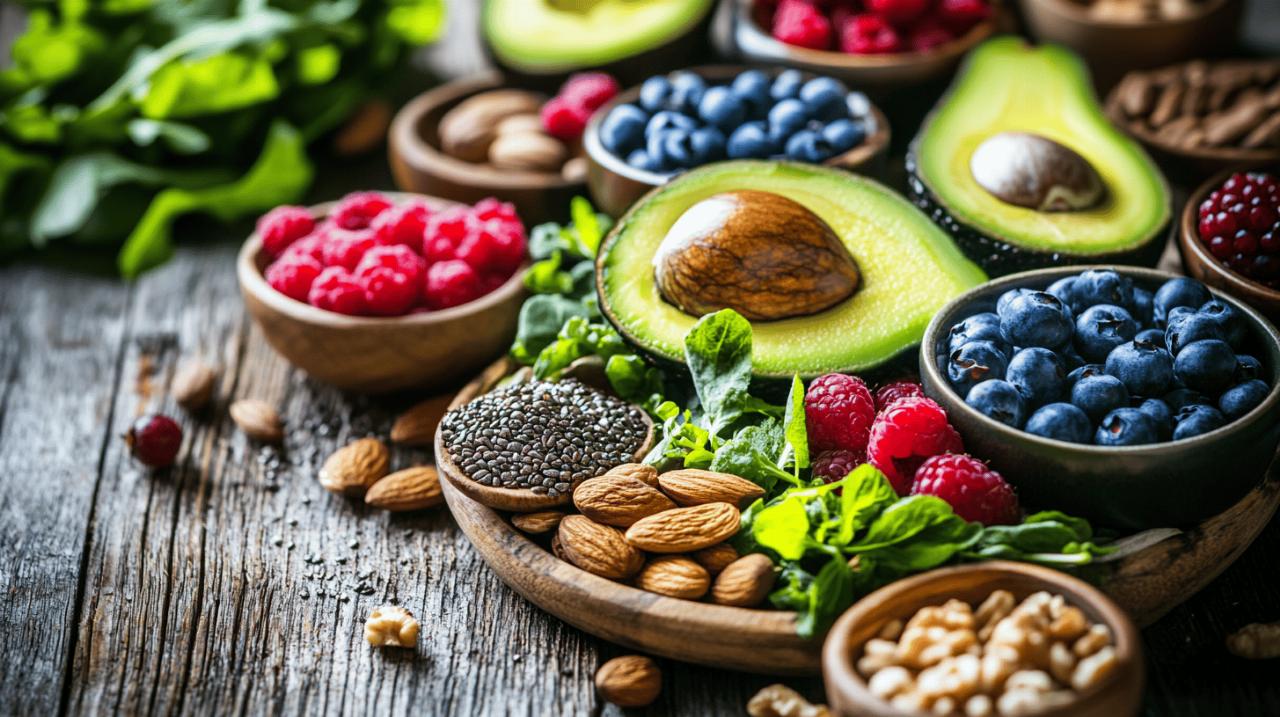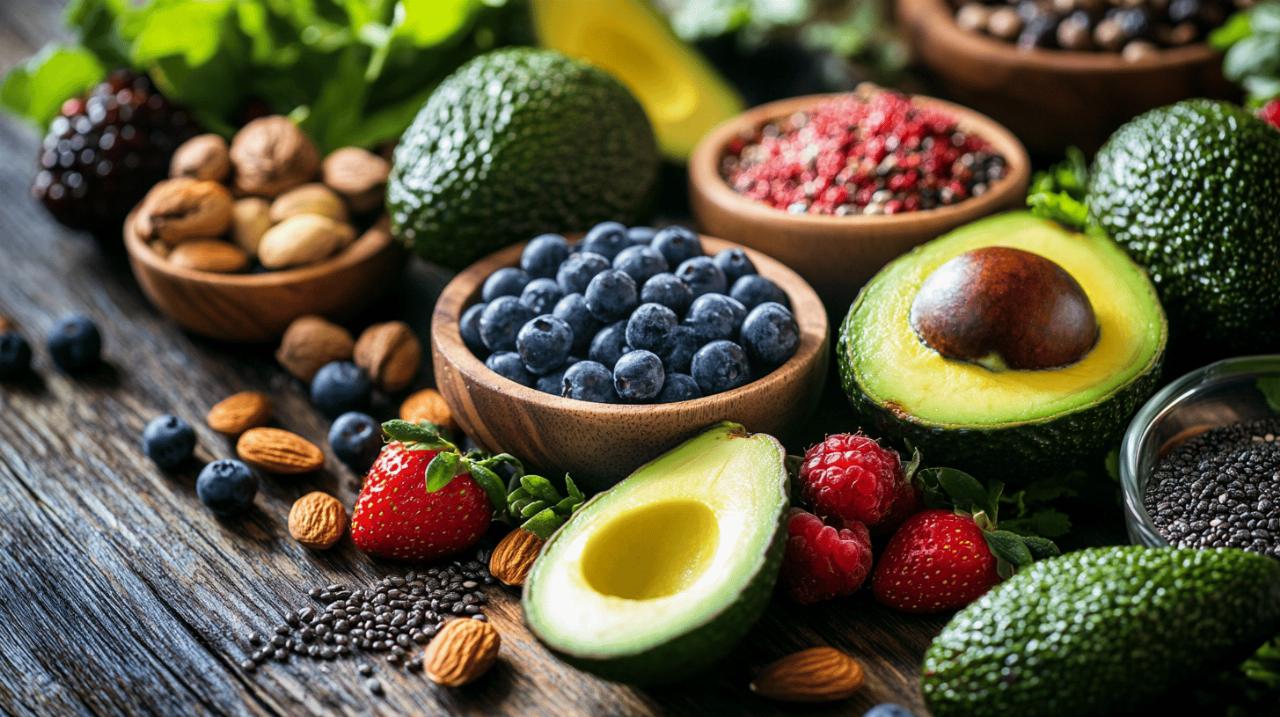Boost Your Health and Break the Cycle: Controlling Gamma GT Through Superfood Nutrition
Maintaining optimal health requires attention to various bodily functions, and one often overlooked marker is gamma-glutamyl transferase, commonly known as GGT. This liver enzyme serves as a window into your overall wellbeing, offering insights that extend far beyond liver health alone. By understanding what influences GGT levels and embracing nutritional strategies centred around superfoods, you can take meaningful steps toward a healthier, more vibrant life.
Understanding Gamma GT and Why It Matters for Your Wellbeing
What Exactly Is Gamma-Glutamyl Transferase and Its Role in Your Body
Gamma-glutamyl transferase is a serum marker that plays a crucial role in your body's metabolic processes. This enzyme is primarily found in the liver, where it assists in the metabolism of glutathione, one of the body's most powerful antioxidants. When your liver is functioning properly, GGT levels remain within a healthy range. However, when these levels begin to rise, it can signal that your body is under stress from various sources. The liver is a remarkable organ responsible for detoxification, blood sugar regulation, and processing the nutrients from your diet. When GGT levels climb, it may indicate that your liver is working harder than it should, often due to factors such as exposure to toxins, dietary habits, or other lifestyle influences. Research has shown that GGT is correlated with antioxidant depletion, meaning that elevated levels might reflect your body's struggle to manage oxidative stress. This connection makes GGT a valuable indicator not just of liver health but of your overall metabolic state.
The warning signs: how elevated ggt levels affect your overall health
Elevated GGT levels are linked to a range of serious health conditions, making them an important marker to monitor. Studies have established connections between high GGT and cardiovascular disease, diabetes, metabolic syndrome, and even increased mortality risk. When GGT levels rise, it often signals underlying issues such as atherosclerosis, heart failure, and insulin resistance. Life insurance companies have taken note of this relationship, using GGT levels to assess mortality risk in applicants. Beyond cardiovascular concerns, elevated GGT can predict the development of obesity, prehypertension, and gestational diabetes. It also serves as a predictor of chronic kidney disease and albuminuria, conditions that can significantly impact quality of life. Even slight increases within what is considered the normal range may indicate emerging health risks. Symptoms of a congested liver, which often accompany elevated GGT, include persistent tiredness, general malaise, headaches, poor digestion, and impaired blood sugar regulation. Recognising these warning signs early allows you to take proactive steps before more serious conditions develop.
The superfood solution: natural foods that support healthy ggt levels
Top Superfoods Proven to Help Regulate Liver Function and GGT
Your diet plays a pivotal role in managing GGT levels, and certain superfoods stand out for their liver-protective properties. A healthy diet rich in tree nuts, beans, fruits, vegetables, and lean animal proteins creates a foundation for optimal liver function. Research conducted on Japanese populations has shown that dietary patterns emphasising fruit and vegetables are associated with lower GGT levels in both men and women. Specific foods like garlic, onions, artichokes, and brassica vegetables including broccoli, Brussels sprouts, and cabbage are particularly beneficial for liver health. These foods contain compounds that support the liver's detoxification processes and help maintain healthy enzyme levels. Whilst a seafood diet has been linked to higher GGT levels in some studies, the overall dietary context matters significantly. Limiting consumption of red meat, fried foods, and alcohol can help prevent GGT elevation. Interestingly, factors such as smoking and obesity also contribute to increased GGT levels, highlighting the importance of a comprehensive approach to diet and lifestyle.
Building your daily menu: practical ways to incorporate these nutrient-rich foods
Transforming your understanding of liver-friendly foods into daily practice requires thoughtful meal planning. Start your day with a breakfast that includes tree nuts such as almonds or walnuts, perhaps mixed into porridge with fresh berries. For lunch, consider a colourful salad featuring leafy greens, artichoke hearts, and lean proteins like grilled chicken or chickpeas. Dinner might centre around steamed broccoli or Brussels sprouts alongside a modest portion of fish or beans. Incorporating garlic and onions into your cooking not only enhances flavour but also delivers compounds that support liver function. Snacking on fresh fruit throughout the day provides essential vitamins whilst keeping you satisfied between meals. When planning your weekly shop, focus on variety and colour, ensuring your trolley is filled with the vibrant produce that characterises a healthy diet. By making these nutrient-rich foods the cornerstone of your meals, you create an environment where your liver can thrive, naturally supporting healthy GGT levels without drastic measures or restrictive eating patterns.
Lifestyle changes that complement your superfood diet for optimal results
The Importance of Regular Physical Activity in Managing GGT Levels
 Physical activity serves as a powerful complement to dietary changes when managing GGT levels. Regular exercise helps your body maintain healthy weight, improves insulin sensitivity, and supports overall metabolic function. Studies have demonstrated that GGT can predict obesity and prehypertension, conditions that respond well to increased physical activity. You need not become a marathon runner overnight; even moderate exercise such as brisk walking, cycling, or swimming for thirty minutes most days of the week can yield significant benefits. Exercise enhances your body's ability to regulate blood sugar, reducing the burden on your liver and potentially lowering GGT levels. It also helps combat the metabolic syndrome, a cluster of conditions including high blood pressure, elevated blood sugar, and abnormal cholesterol levels that are associated with elevated GGT. The key is consistency rather than intensity. Finding activities you genuinely enjoy increases the likelihood that you will maintain them long term, creating lasting positive changes in your health markers.
Physical activity serves as a powerful complement to dietary changes when managing GGT levels. Regular exercise helps your body maintain healthy weight, improves insulin sensitivity, and supports overall metabolic function. Studies have demonstrated that GGT can predict obesity and prehypertension, conditions that respond well to increased physical activity. You need not become a marathon runner overnight; even moderate exercise such as brisk walking, cycling, or swimming for thirty minutes most days of the week can yield significant benefits. Exercise enhances your body's ability to regulate blood sugar, reducing the burden on your liver and potentially lowering GGT levels. It also helps combat the metabolic syndrome, a cluster of conditions including high blood pressure, elevated blood sugar, and abnormal cholesterol levels that are associated with elevated GGT. The key is consistency rather than intensity. Finding activities you genuinely enjoy increases the likelihood that you will maintain them long term, creating lasting positive changes in your health markers.
Breaking harmful habits: alcohol, stress, and sleep quality
Certain lifestyle factors have a particularly strong impact on GGT levels and deserve special attention. Alcohol consumption stands out as one of the most significant contributors to elevated GGT, as your liver works overtime to process alcohol, leading to increased enzyme production. Reducing or eliminating alcohol intake can produce dramatic improvements in GGT levels within weeks. Stress, whilst often overlooked, also affects liver function through various hormonal and inflammatory pathways. Chronic stress contributes to metabolic dysfunction and may indirectly influence GGT levels. Developing stress management techniques such as meditation, deep breathing exercises, or regular time in nature can support your liver health alongside dietary changes. Sleep quality plays an equally important role, as your body performs essential repair and detoxification processes during rest. Poor sleep disrupts metabolic function and has been linked to various health conditions associated with elevated GGT. Establishing a consistent sleep schedule and creating a restful bedroom environment helps ensure your body has adequate time to regenerate each night.
Creating a Sustainable Plan: Your Journey to Better Health Starts Today
Setting realistic goals and tracking your progress over time
Embarking on a health improvement journey requires clear, achievable goals rather than vague aspirations. Rather than attempting to overhaul your entire lifestyle overnight, focus on implementing one or two changes at a time. Perhaps you begin by adding an extra serving of vegetables to your evening meal or committing to a twenty-minute walk after dinner. Once these habits feel natural, you can build upon them with additional improvements. Tracking your progress provides motivation and helps you identify which strategies work best for your individual circumstances. Keeping a simple food diary allows you to see patterns between your dietary choices and how you feel. If you have access to blood tests through your GP or private services, monitoring your GGT levels over time offers concrete evidence of your progress. Some health services now offer comprehensive blood tests examining over one hundred biomarkers, providing insights into your biological age and overall health status. These detailed results can help you understand not just your GGT levels but how various aspects of your health interconnect, enabling more informed decisions about diet, exercise, and lifestyle modifications.
When to Seek Professional Advice: Working with Your GP for Best Results
Whilst dietary and lifestyle changes can significantly impact GGT levels, professional medical guidance remains essential. Your GP can interpret blood test results within the context of your overall health, identifying whether elevated GGT warrants further investigation or simply lifestyle modification. Certain medications, including acetaminophen, can affect GGT levels, making it important to discuss your complete medical picture with a healthcare provider. If you have existing conditions such as diabetes or cardiovascular disease, your doctor can help you understand how managing GGT levels fits into your broader treatment plan. Some individuals may benefit from specific supplements such as milk thistle, which contains silymarin, a compound that may reduce fasting blood glucose and inflammation. Turmeric, N-acetylcysteine, and Vitamin E have also shown promise in supporting liver health, though high doses should only be taken under medical supervision. Your GP can advise whether these supplements are appropriate for your situation and how they might interact with any medications you currently take. Remember that preventative health measures work best when tailored to your individual circumstances, and professional guidance ensures you are taking the most effective approach for your unique needs.
